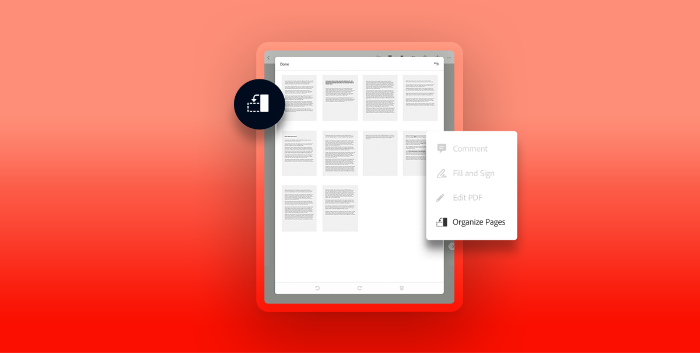ACROBAT
How you can help students learn with interactive digital notebooks.
Learn how educators engage students digitally — in the classroom and online.
ACROBAT
Learn how educators engage students digitally — in the classroom and online.

What is an interactive digital notebook?
An interactive digital notebook is the digital version of the various worksheets and paper notebooks teachers use to help students learn and master concepts in class. These fully paperless resources allow students to engage more deeply with subjects thanks to the ability to view embedded videos, follow hyperlinks to more information, fill in answers by making interactive PDFs with text boxes, and share resources easily through email.
Digital notebooks can help students at any level, from elementary to high school, and in any subject, from science class to social studies and beyond. As more school systems supply students with affordable laptops, such as Chromebooks, digital notebooks for students have become a key tool for blended learning activities.
Here are some of the benefits of a digital notebook for students:
Interactive notebooks can use variety to engage students with different learning styles and help them participate more meaningfully.
PowerPoint-style apps like Google Slides or the free, education-focused Google Classroom keep students’ attention with high-tech functionalities.
Digital notebooks for students can help them create their own learning strategies. Students can conduct their own research online, and teachers can encourage students to dive deeper according to their interests using hyperlinks in the notebooks or by merging multiple resources together.
Students can keep updating their digital student notebook throughout the school year, so it’s easy to go back and review information and previous lessons ahead of the next exam.
Teachers can use these tools to support learning objectives and engage students with various needs and interests so that class outcomes are improved.
For example, a biology lesson plan using digital notebooks could have students watch an embedded video about photosynthesis, then test their knowledge by having them label different stages of the process on a full-color diagram in the same slide. Students could apply what they learned with further research online and then, create a new slide with images, graphs, and information about the various proteins and enzymes involved in photosynthesis.

A traditional interactive notebook contains a variety of media and information prepared by both the teacher and the student. That can include full-color photographs, screenshots of charts and diagrams, adding hyperlinks to videos or embedding them, animations, scanned notes, or any other materials to help students grasp the concepts being taught.
When creating a digital notebook for your class, start by determining what you want it to look like and what purpose it’s going to serve.
1. You can add a syllabus and other course materials to your digital notebook, which can be updated throughout the year as classroom policies change.
2. Add homework assignments that students can complete directly from the digital notebook, such as interactive worksheets with fillable forms where students can add their answers.
3. You may have a section where you upload a piece of assigned reading for students to annotate collaboratively from their devices.
4. Students can do research online and add links, photos, and videos to a multimedia section.
5. Add blank sections between lessons for students to take notes.
As you gather materials to add to your digital interactive notebook, you may find you have physical documents you’d like to include. Using the Adobe Scan app you can quickly digitize paper documents and insert them into your notebook as a high-quality JPG or PDF.
Once you’ve prepared your pages, merge PDFs or JPGs to combine all these individual files into a single document for your digital notebook. After they’re merged, you can delete or rearrange individual pages until they’re in the order you want.

If you want to add fillable worksheets or blank pages where students can take notes, use the Prepare Form function in Acrobat to create pages with interactive text boxes. Acrobat will scan your document and automatically place text boxes in the appropriate places, but you can also add your own manually.
Depending on how long your digital notebook is, it may take up more space on your device than expected. Fortunately, you can learn how to make a PDF smaller using a tool to compress file size small enough to send as an email attachment without sacrificing any quality.
Whatever the subject, digital interactive notebooks are an engaging and cost-effective way to help students take an active role in the learning process.